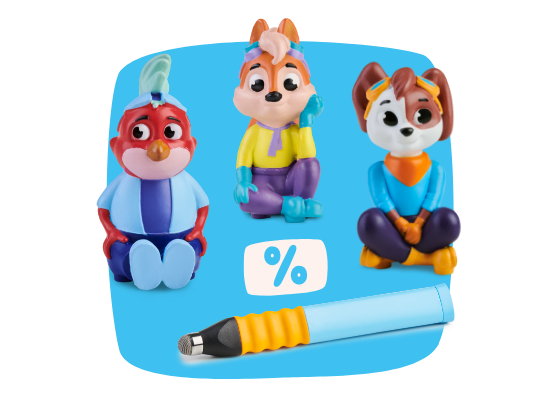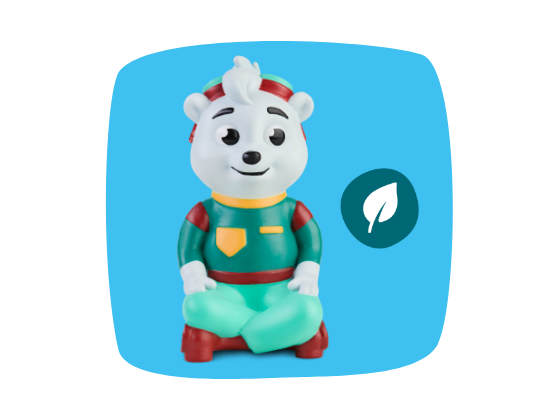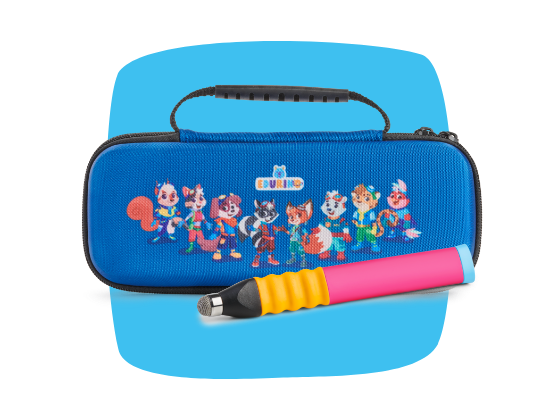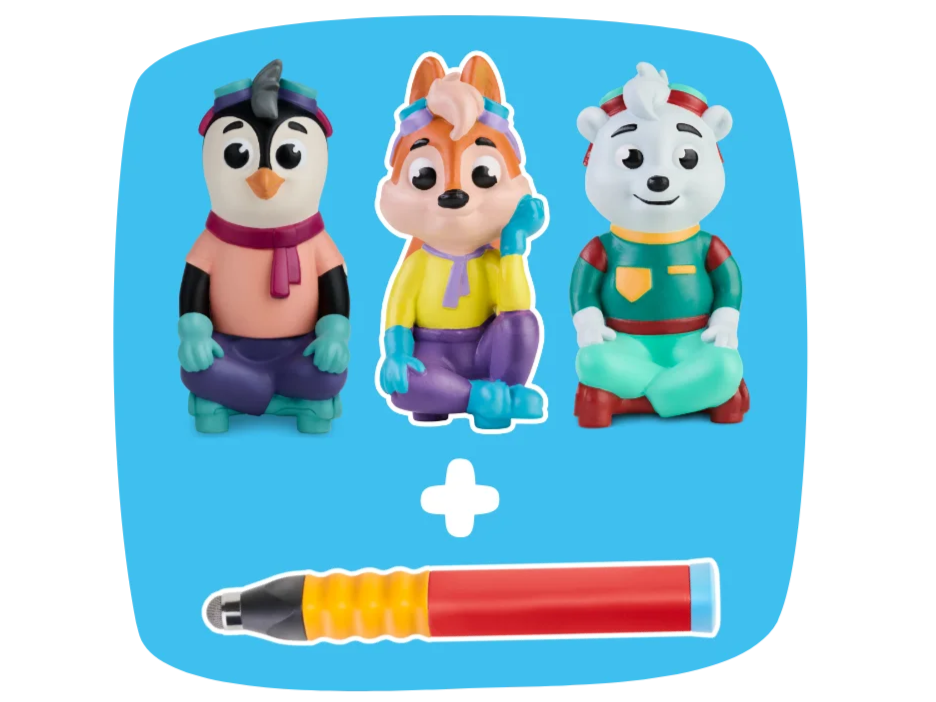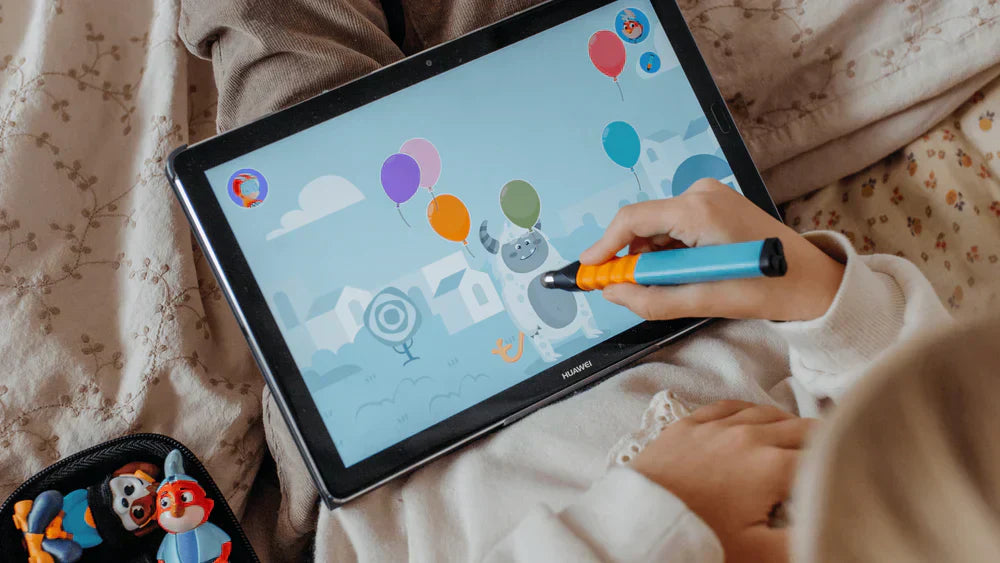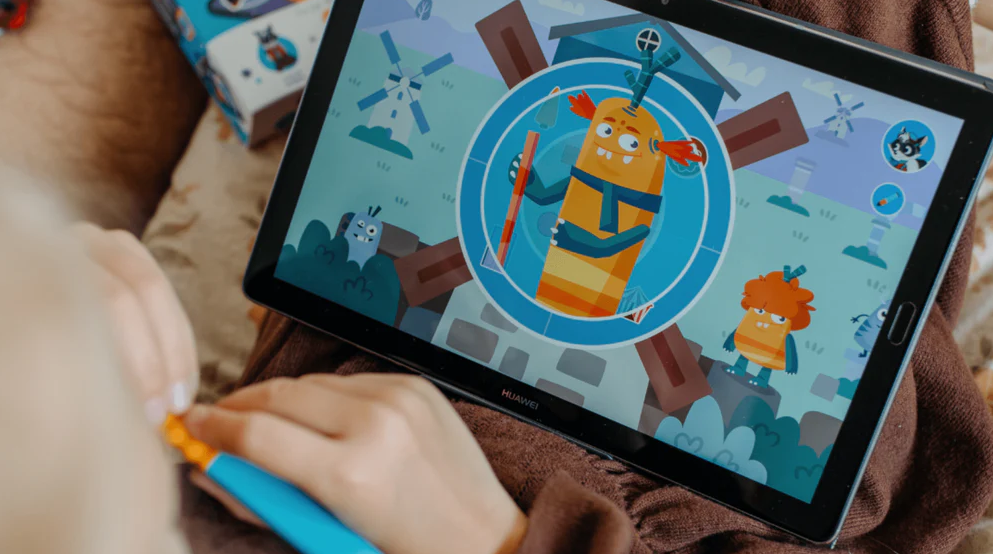Is math boring and tedious? It doesn't have to be! With our creative math games for in-between times, early childhood algebra becomes child's play! And the best part is, you can play them anywhere. Whether on vacation or at home – this way, math is finally fun!
We already established in our blog article " The ABCs of Early Childhood Math Competence " that math isn't just about calculating. To develop the broad spectrum of mathematical understanding, there are many small games that you can easily try out with your child in everyday life. We're introducing a few here. Give them a try, and feel free to let us know in the comments how your child reacted to one or more of them!
Learning to count
Even though children already have an understanding of numbers and quantities at 18 months, most don't start counting until they're 2 years old. And this is a great way to incorporate it into everyday life. Whether it's apples in the supermarket that you put in your shopping cart or trains that you see at a station, just focus on what excites your child and simply ask them: "Wow, how many trains are there here in total?" To give the whole thing a more competitive feel, you can also start by looking for twins in your area together. Once everyone has named a pair, simply move on to triplets, quadruplets, and so on. You'll see, this will be quite a challenge for you too! Last but not least, there's the lovely "spoon game." For this, place a bowl of healthy snacks between you and your child. Whether nuts, raisins, or small wild strawberries - everyone gets to take a whole spoonful and then count who has more. You can, of course, increase the intensity by both of you blindfolding each other. And finally, of course, there is the enjoyment!
Gain spatial understanding
"I spy something you can't see" is not only a well-known color game, but can also be played with spatial descriptions. After going through the prepositions to be used together, such as above, on, under, next to, between, etc., you can ask, for example, "I spy something you can't see, and it's on the children's shelf under the picture they painted." This trains the combination of multiple perspectives and directly practices verbal descriptions. Another well-known game is memory. Simply make one yourself using small, hand-painted objects and cardboard, and then get started: Where is each object, and where is the corresponding partner card? Another game is the so-called tray game. For this, you place several objects on a tray. Your child should look at it and memorize it. Then you leave and come back with the same tray, but you've taken one thing away. Which one is missing? Your children will have a lot of fun with this game, especially if they can choose which objects to take away.
Memorize colors and shapes
One of the most well-known games is origami, which probably originated in China. By folding a – usually square – sheet of paper, you can create wonderful three-dimensional objects. The folds then define further shapes, which can then be painted. How about a paper airplane with blue wings? Or a flower with red petals? There are plenty of instructions online. Just get started! Another great activity is the so-called feel box. For this, you fill a bag with various objects and let the child feel them: Is the object round, rectangular, pointed, or cylindrical? After the description, the child checks whether they were correct. Then, of course, the child can fill the bag, and it's your turn. This not only practices fine motor skills but also trains spatial awareness of shapes. One last tip from us would be to paint mandalas. You can either print them out or – even better – simply create your own mandala with different shapes together with your child. What should go into the large mandala circle, for example? Three triangles? Four small squares? And so on. At the end, this can of course also be colored in.
Sort things
Sorting is a great way to categorize things and thus correctly classify sizes, colors, and quantities. For example, you can organize your colored pencils by length, your stuffed animals in bed by size, and even your books by weight. Clothes can be grouped together by color, and there's something to discover in the kitchen, too: Which bowls and Tupperware containers fit inside and on top of each other? And who can fit more inside each other? This way, not only does it tidy things up, but you also have a nice result after the mental exercise.
Understanding of quantities
Counting is one thing, determining quantities is another. While you can count eggs when baking a cake, it becomes more difficult when it comes to determining the amount of flour. We think baking is a wonderful activity that combines many mathematical skills: counting, weighing, and estimating. You can also learn estimating through the so-called pea game. To do this, simply cup a few peas in your fist, open them briefly for a few seconds, then close them again, and then your child can guess: How many peas did I have in my hand? You can repeat this with different quantities. As soon as it's your child's turn, they can count the peas themselves first and then let you guess. If they can't count yet, they can simply hold more or fewer peas in their hand according to their gut feeling and then count the amount together with you afterwards. A similar estimation game is the comparison game. You place two similar objects next to each other, and your child has to guess which is heavier: a golf ball or a ping-pong ball? A plastic cup or a water glass? A tennis ball or an orange? First, give your guess and then feel it yourself. To make the whole thing even clearer, you can of course also use the kitchen scale and practice the numbers right away.
As you can see, there are countless games you can easily play together at home or on the go to promote mathematical understanding. As adults, we often focus too much on drawing and reading aloud, but these kinds of mind games can also be creative and fun. That's why we recommend trying out a math game for your next play session!

